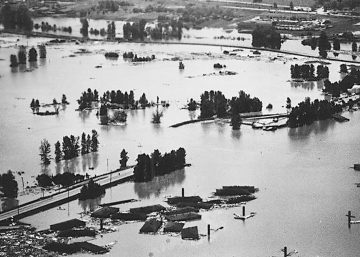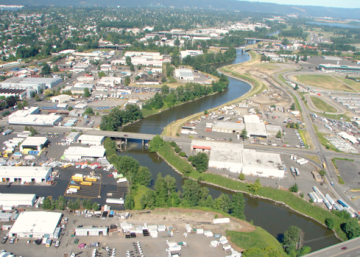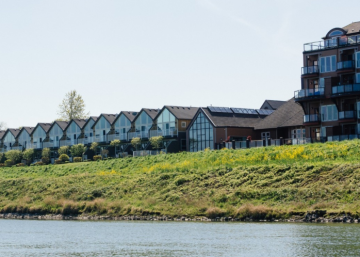
This week marked an important moment for Levee Ready Columbia and the Drainage Districts. On Wednesday, we celebrated the official launch of the US Army Corps of Engineers New Start Feasibility Study with a signing ceremony at Fairview City Hall. During the ceremony, Colonel Aaron Dorf, Commander of the Portland District of Army Corps, and Reed Wagner, Executive Director of Multnomah County Drainage District, signed a Federal Cost-Share Agreement – the official document that signifies our partnership with the Corps and commits up to $3 million in federal funding and staff expertise to investigate solutions to modernize our levee system. The study will identify projects to make our levee system more resilient, reliable, and compliant with 21st century levee safety standards.
This New Start Feasibility Study is unique in that we, the “local sponsors,” are not required to pay half of the $3 million. Instead, the study has been one-hundred percent funded by Congress under the Army Corps’ Fiscal Year 2019 Storm Supplemental, funds made available to the Corps specifically to work on flood and storm damage reduction projects – e.g., flood safety projects in communities vulnerable to flooding.
To be clear, all of the funding made available by Congress will go directly to the Army Corps for use on this three-year study, which will build on all of the investigative work we have already done to identify the deficiencies in our local levee system. The Corps brings a deep bench of experienced interdisciplinary water resource professionals, including geotechnical engineers, hydrologists, water resource engineers, environmental and permitting specialists, economists and other supporting staff. The Levee Ready Columbia partnership and the Drainage Districts will contribute staff time to the study and conduct outreach to help assure the projects meet the needs of our community. The Corps, with our support, will develop alternative solutions for addressing problem areas in the system, and will, ultimately, recommend and design specific solutions to reduce the risk of flooding.
Once recommendations are fully developed – and if a federal interest in reinvesting in the system is established – the Corps will deliver a final report to Congress, requesting funds to construct the projects. If funds are allocated, they will require a local match or “cost-share,” but the federal government will contribute a significant portion to the projects they choose to fund. This is an exciting opportunity to have federal help in repairing and modernizing our levee system. Without this opportunity, we would have to identify ways to fund all the necessary repairs and improvements here in Oregon.
Since 2012, Corps feasibility studies have been guided by what they call their “3x3x3 rule,” which basically says that all feasibility reports must be done in three years, cannot cost more than $3 million, and must involve all three levels of Corps review – district, division, and headquarters – throughout the process. This will help keep the study moving forward and ensure there aren’t any delays when it comes time to deliver the recommendations – and financial request – to Congress.
Here’s how the Corps outlines the key decision points and milestones in their feasibility study process:

To translate, the process will involve:
- 3 months of planning to assess problem areas, identify potential solutions, and select the project alternatives to further investigate;
- 9 months of investigation and analysis to tentatively select the recommended solutions for the problem areas;
- 6 months of internal review to vet and decide on the recommended project alternatives to pursue going forward;
- 12 months to design the project plans to bring the recommended solutions to life; and
- 6 months for final review of the recommendations in Washington, DC.
What’s important to know right now is that this will be an iterative process that will involve multiple levels of review at the federal and local levels. We will work closely with the Corps every step of the way to ensure our community has a strong voice at the table and local values are well represented.
As we embark on this process with the Corps, we are also planning on conducting our own local process to develop project alternatives. We still have a lot to learn about the Locally Preferred Alternative (LPA) process and how it can be used to integrate local priorities and contribute to the Corps’ recommendations. We will continue to research and plan for our local process as the scoping phase of the feasibility study happens over the next three months. We look forward to reaching out to you to solicit your direction and we will share information as it becomes available.
In addition to the New Start Feasibility Study, we are also working to develop plans to modernize the century-old governance structure under which the levees and drainage system behind the levees are maintained and funded. This work includes developing several requests to take to the State Legislature during the 2019 session. If you would like to have LRC update your neighborhood association, community group, professional association, or any other gathering of local residents in Multnomah County, please contact our Public Affairs & Communications Manager, Evyn Mitchell. We’re eager to connect with you and hear your feedback.


